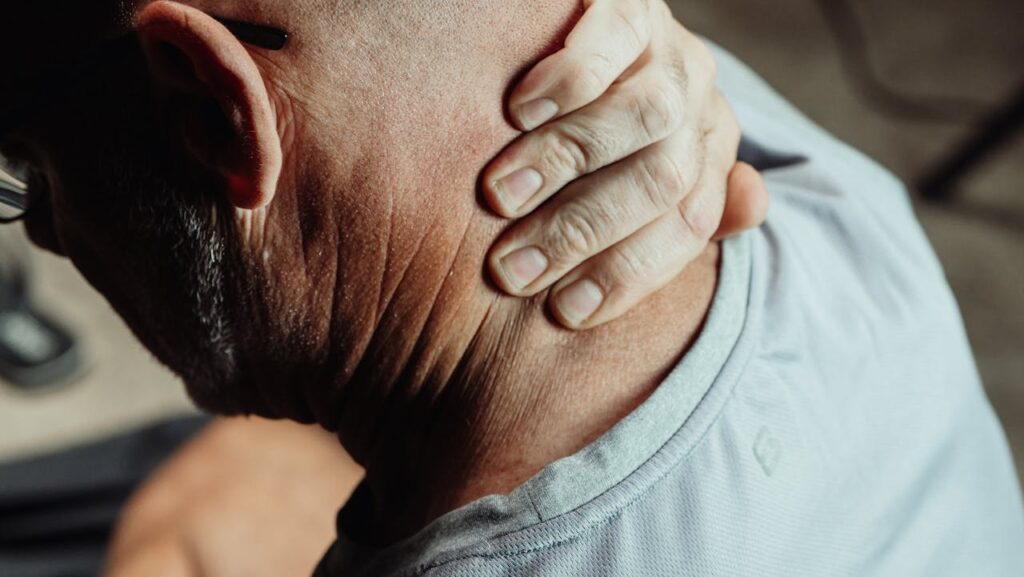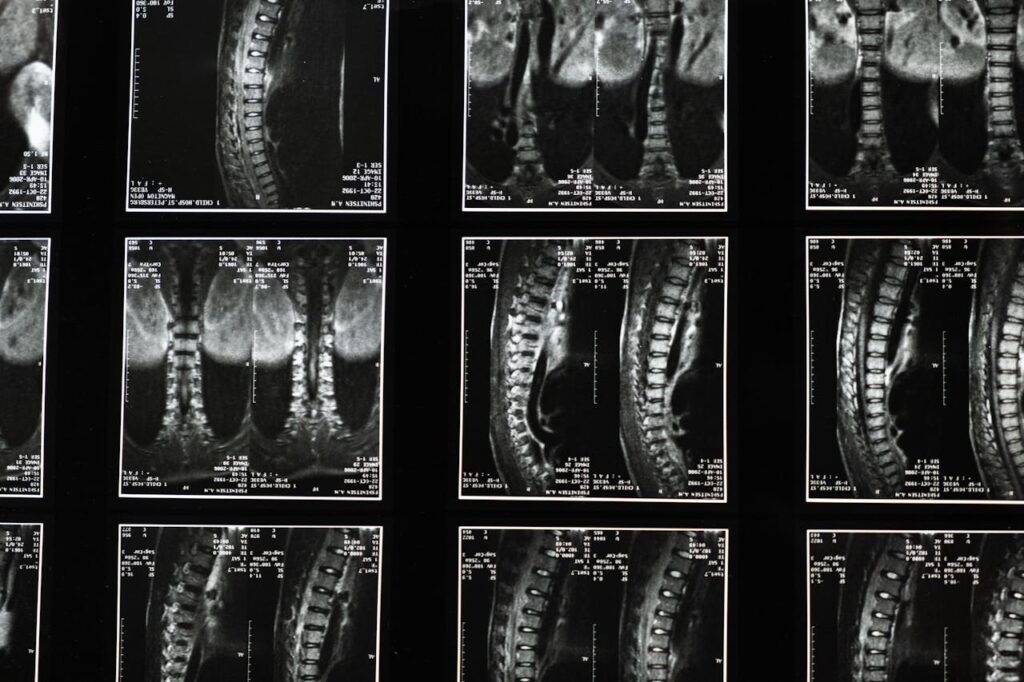Key Takeaways:
- Life-Altering Impact: Spinal cord injuries from car accidents drastically alter mobility, independence, and financial stability.
- Vital Nerve Bundle: The spinal cord, a crucial nerve bundle, regulates movement and sensation body-wide.
- High Incidence Rate: Car accidents cause 38% of spinal cord injuries, totaling 6,726 annual U.S. cases.
- Trauma Mechanisms: Blunt force or penetrating wounds in crashes can sever or damage the spinal cord.
- Complete vs. Incomplete: Complete injuries cause total function loss below injury; incomplete retain some function.
- Injury Location Effects: Cervical injuries may cause quadriplegia; thoracic/lumbar injuries often lead to paraplegia.
- Symptom Recognition: Pain, numbness, or loss of bowel control signals need for immediate medical care.
- No Known Cure: No cure exists for spinal cord damage, but therapies aid recovery and function.
- High Financial Costs: Lifetime costs for severe spinal cord injuries range from $1.6M to $4.8M.
- Legal Support Importance: Experienced legal representation is vital for securing compensation and navigating claims processes.
When you’re involved in a car accident, spinal cord injuries represent some of the most devastating consequences you might face. These life-altering injuries can transform everything about your daily existence in an instant – from your ability to walk, work, and maintain independence to your family’s financial stability and emotional well-being.
The split-second impact of a collision can sever neural pathways that took decades to develop, leaving victims and their families grappling with medical bills that can easily exceed millions of dollars over a lifetime. As one of our experienced Denver injury attorney will tell you, the stakes couldn’t be higher when spinal cord trauma is involved.
Let us walk you through what you need to understand about spinal cord injuries from car accidents, because knowledge can be the difference between proper recovery and permanent complications.
Understanding Spinal Cord Injuries from Car Accidents
Your spinal cord is far more than just a collection of bones running down your back. It’s a cylindrical mass of nervous tissues surrounded by vertebrae—an elongated bundle of nerves extending from your brain to the middle of your back. This remarkable structure serves as the main component of your central nervous system, responsible for regulating movement and sensation while delivering nerve signals throughout your body.
When we talk about spinal cord injury, we’re describing damage to the spinal cord or nerves at the end of the spinal canal. Any injury to this complex system can be dangerous and life-threatening. The damage can cause permanent changes in your bodily functions, including strength, feeling, and sensation. One of the most challenging aspects of spinal cord trauma is that damage can be difficult to repair due to the complexity of this vital organ.
The Alarming Statistics You Need to Know
Car accidents are a leading cause of spinal cord injuries, and the numbers are sobering. Motor vehicle accidents account for approximately 38% of all spinal cord injuries according to the National Spinal Cord Injury Statistical Center. The NSCISC estimates about 17,700 new SCIs annually from all causes, with motor vehicle accidents contributing roughly 6,726 cases.
Here’s what really drives this point home: nearly one in 50 people in the U.S. live with some level of paralysis according to the Christopher & Dana Reeve Foundation, and approximately 38% of those with spinal cord injuries sustained them from auto accidents. Between 240,000 and 337,000 people are currently living with SCI in the United States. These aren’t just statistics—they represent real people whose lives changed in an instant.
How Car Accidents Lead to Spinal Cord Injuries
The mechanism of injury in motor vehicle crashes is often sudden and violent. When your vehicle collides with another object, your head can move violently forward and backward, or strike objects like the steering wheel, dashboard, or windows. Your brain, suspended in cerebrospinal fluid, can collide with the inner skull walls, leading to bruising, nerve fiber damage, swelling, or twisting and stretching that disrupts brain function.
Blunt force trauma can break vertebrae, and the sharp ends of these bones can sever or damage the spinal cord itself. The force can also inflame the meninges—the tissue layers protecting the spinal cord—causing swelling and pressure on the cord. In some cases, penetrating wounds from shrapnel in car accidents can also cause spinal cord injuries.
Several contributing factors can increase your risk of serious spinal injuries in vehicle accidents. Poor car manufacturing standards, inadequate vehicle safety measures, poorly designed roads, and driver inattention all play a role. Alcohol is estimated to be a factor in as many as 25% of all spinal cord injuries. Engaging in risky behaviors or having bone and joint disorders like arthritis or osteoporosis can also increase your risk.
Common Types of Spinal Cord Injuries from Car Accidents
Understanding the types of spinal injuries you might face helps you recognize the severity of your situation and seek appropriate medical treatment.
Complete vs. Incomplete Spinal Cord Injuries
Complete Spinal Cord Injury results in total loss of all motor and sensory function below the injury level. This often occurs due to a contusion, bruise, or compromised blood flow rather than a severed cord. Complete injuries typically result in paralysis.
Incomplete Spinal Cord Injury leaves victims with some level of function below the injury site. An incomplete injury means the spinal cord’s ability to convey messages to or from the brain is not completely lost. The extent of remaining function varies significantly depending on the location and severity of the damage.
Injuries by Location on the Spinal Column
The higher the injury on your spine—closer to your brain—the more severe it’s likely to be.
Cervical Spine (Neck) Injuries: These can result in quadriplegia or tetraplegia, which is the loss of movement and sensation in all four limbs. Cervical injuries affect your ability to control your arms, hands, chest muscles, and everything below.
Thoracic Spine (Upper Back) Injuries: These can impact your chest and legs, leading to paraplegia—the loss of movement and sensation in the lower half of your body. Your arms and hands typically retain function.
Lumbar Spine (Lower Back) and Sacral (Tailbone) Injuries: Injuries to these lower regions can also result in paraplegia, though victims generally retain more movement and feeling than those with higher injuries.
Specific Types of Spine Injuries
Whiplash: This soft-tissue injury to the neck is common in rear-end collisions, caused by sudden, forceful back-and-forth movement. While often considered “minor,” whiplash can cause lasting nerve pain and mobility issues.
Herniated Discs: This occurs when a disc between vertebrae is forced through a weakened part of the spine, potentially irritating nerve roots or pressing on the spinal cord. The pressure can cause severe nerve pain and motor function loss.
Spinal Fracture: A break in one or more vertebrae, ranging from minor compression to severe burst fractures. These injuries cause intense pain and can threaten spinal cord integrity.
Spondylolisthesis: When one vertebra slips out of place onto the one below it, often affecting the lumbar spine. This can compress nerve roots and cause chronic pain.
Spinal Stenosis: Narrowing of spaces within the spine, putting pressure on the spinal cord and spinal nerves. This can develop immediately after trauma or over time.
Spinal Concussions and Contusions: While dysfunction usually resolves within a few days, these injuries can cause symptoms like burning, tingling, numbness, or electric-shock-like sensations in the extremities.
Recognizing Spinal Cord Injury Symptoms
You bear the burden of proof when it comes to documenting your injuries, which is why recognizing symptoms early is crucial for both your health and any potential legal claim.
Immediate Physical Symptoms
Watch for these warning signs at the accident scene and in the hours following:
- Pain at the injury site, which can be extreme
- Loss of movement or muscle weakness
- Muscle weakness or paralysis
- Numbness, tingling, or loss of sensation (inability to feel heat, cold, or touch)
- Difficulty walking or maintaining balance
- Oddly positioned or twisted back or neck
- Abnormal reflex activities or involuntary muscle spasms
- Headache or pressure in the head, neck, or back
Autonomic and Internal Symptoms
These symptoms affect your body’s automatic functions:
- Loss of bowel or bladder control
- Problems with heart rate and blood pressure
- Difficulty breathing or coughing
- Circulatory issues such as swelling in extremities
- Changes in sexual functioning and fertility
- Digestive or gastrointestinal issues
- “Phantom” pain radiating beyond the injury site
- Development of sleep apnea
Many victims struggle with bowel control issues that can persist long after the initial trauma. These autonomic functions often require relearning and adaptive strategies during recovery.
Delayed Onset of Symptoms
One of the worst things we see is when an injured person dismisses their symptoms because they don’t feel terrible immediately after the crash. Some symptoms may not be immediately apparent, taking hours, days, or even weeks to manifest. You may actually feel worse 48 hours after the accident than immediately after.
It’s crucial to be vigilant for symptoms even if they seem mild initially. We’ve seen cases where spinal cord damage becomes apparent only after swelling develops or when the injured person attempts to resume normal activities.
Immediate Steps and Diagnosis After a Suspected SCI
If you suspect a spinal cord injury, seek immediate medical attention—this is crucial, even if symptoms seem mild or are not immediately obvious. This step serves two purposes: preventing permanent damage and providing necessary documentation for potential legal claims.
At the Accident Scene
Do not move the injured person unless there is immediate danger. Encourage them to stay still to prevent further damage. If the person is not breathing, perform CPR without tilting the head back; instead, move the jaw forward. Emergency medical technicians are trained to stabilize individuals with suspected spinal cord injuries, often by immobilizing the spine with a rigid neck collar and carrying board.
Medical Evaluation and Diagnostic Tests
When you reach the hospital, doctors will test for sensory and motor function. They’ll ask detailed questions about the accident and conduct diagnostic tests including:
- X-rays to identify bone fractures and alignment issues
- CT scans (Computed Tomography Scans) to identify blood clots, fractures, bruised brain tissues, and swelling
- MRIs (Magnetic Resonance Imaging) for detailed images of soft tissues, herniated discs, or blood clots
These tests help determine the extent of spinal cord damage and guide treatment decisions.
Treatment and Rehabilitation for Spinal Cord Injuries
Let me tell you something important: currently, there is no known way to reverse spinal cord damage. However, researchers are exploring new treatments like nerve cell regeneration, electrical stimulation devices, robotic gait training, and advanced prostheses.
Emergency Medical Actions
Immediately after the injury, immobilizing the spine is crucial. Surgery may be performed to stabilize the spine, remove bone fragments, foreign objects, or fluid pressing on the spinal cord, or to fuse broken spinal bones. These procedures help relieve pressure on the spinal cord and prevent additional damage. Medical teams may lower body temperature for 24-48 hours to help prevent damaging inflammation. Steroid medication like Medrol, administered within 8 hours, can reduce nerve cell damage and inflammation.
Comprehensive Rehabilitation and Long-Term Care
Rehabilitation focuses on maximizing recovery and improving function. This often involves a combination of therapies working together to address different aspects of recovery:
Physical Therapy: Helps you regain daily functions and muscle strength, working to improve muscle tone and prevent muscle control deterioration. Physical therapists focus on restoring muscle movement patterns and teaching adaptive techniques.
Occupational Therapy: Improves fine motor skills and daily tasks, helping you adapt to changes in motor function. Physical and occupational therapists work closely together to create comprehensive treatment plans tailored to your specific needs and level of injury.
Speech and Respiratory Therapy: Helps re-learn communication and assists with breathing difficulties that may arise from chest muscle weakness.
Psychological Counseling and Support Groups: Essential for coping with emotional distress, mental health issues, and connecting with others facing similar challenges.
Additional treatment components include:
- Medication: For managing side effects like sleep apnea, chronic headaches, anxiety, or depression
- Assistive Devices: Wheelchairs, walking aids, exoskeletons, leg braces, adaptive communication devices
- Home and Vehicle Modifications: Adding ramps, handrails, wider doorways to accommodate mobility limitations
- Vocational Therapies: To help individuals return to work with accommodations
- Lifestyle Strategies: Healthy diet and exercise to maintain overall health
Long-Term Impacts and Complications of SCI
Spinal cord injuries can lead to permanent changes in bodily functions, mobility, and strength. These life-altering consequences may include cognitive decline and inability to work and earn a living. Many victims experience difficulty with sexual functioning and fertility, along with loss of organ-related function. The risk of permanent disability varies significantly depending on the location and severity of the initial injury, with injuries at about the same level often producing similar outcomes.
Associated Health Risks
The injured person faces increased risk of pressure sores, deep vein thrombosis (DVT), and urinary tract infections (UTIs) due to immobility and lack of sensation. We work with medical experts who help our clients understand how to prevent pressure sores and manage these ongoing health challenges.
Mental and Emotional Well-being
Mental health issues such as depression and anxiety are common after spinal trauma. These injuries can lead to crippling anxiety and difficulties maintaining employment or stable relationships years later. Personality changes often occur, affecting not just the injured person but their entire family. Many victims also develop neurological disorders that compound the primary injury, requiring ongoing specialized care.
Financial and Legal Aspects of SCI
Brain injuries and SCIs are particularly expensive to treat, often requiring long-term, costly speech, occupational, and physical therapy. Estimated first-year expenses can range from $198,000 to $1.1 million according to the National Spinal Cord Injury Statistical Center. Lifetime costs for a 25-year-old victim can potentially soar into millions—we’ve seen estimates from $1.6 million to $4.8 million for a severe SCI.
Compensation Claims
When your injury results from someone else’s negligence, you can pursue compensation through insurance claims or lawsuits. Compensation may cover:
Economic Damages: Medical expenses (past and future), lost wages (past and future, including earning potential), home care needs, assistive devices, home and vehicle modifications.
Non-Economic Damages: Physical pain, emotional distress, loss of enjoyment of life, mental anguish, loss of quality of life, disability, disfigurement, and loss of consortium (impact on marital relationships).
Punitive Damages: May be awarded in cases of extreme negligence or criminal behavior, such as drunk driving.
Role of a Personal Injury Attorney
We specialize in complex brain and spinal cord injury cases. Our role includes gathering evidence such as photos, videos, eyewitness statements, police reports, and surveillance footage. We determine liability and the value of your claim, often working with medical experts and life care planners to project future costs.
Our Denver car wreck lawyer handles negotiations with insurance companies to secure a fair settlement and navigate the legal process, including filing lawsuits and representing clients in court if negotiations fail. Most importantly, we ensure you seek prompt medical care and follow treatment plans to “mitigate damages” for legal purposes.
It’s better to take care of you and let us worry about the legal complexities. We’ll juggle the bills later while you focus on your recovery.
Statute of Limitations
In Colorado, the time limit for filing personal injury lawsuits, including those for SCIs, is typically two years from the injury date, but three years for car accidents according to Colorado Revised Statutes. Prompt action is crucial to preserve evidence and avoid denial of rights to compensation.
While car accidents are the leading cause of spinal cord injuries, it’s important to note that other traumatic events can cause similar devastating injuries. Gunshot wounds, for instance, account for a significant portion of spinal cord injuries, particularly in urban areas. Understanding various causes helps medical professionals and legal teams better assess the full scope of spinal trauma cases.
Prevention of SCI in Car Accidents
- Wearing a seat belt every time you’re in a moving vehicle
- Avoiding driving under the influence of drugs or alcohol
- Never getting into a car with someone who is impaired
- Practicing vehicle safety through regular maintenance and defensive driving
- Regular exercise to help strengthen muscles and reduce injury risk
Conclusion
Spinal cord injuries from car accidents represent some of the most serious injuries you can face. The immediate and long-term consequences affect every aspect of your life, from basic body functions to your ability to work and maintain relationships. Understanding the types of injuries, recognizing symptoms, and seeking immediate medical attention are crucial first steps.
Remember, you don’t have to navigate this complex medical and legal landscape alone. We’re here to handle the legal process while you focus on your recovery and rehabilitation. The road ahead may be challenging, but with proper medical treatment, comprehensive rehabilitation, and experienced legal representation, you can work toward the best possible outcome for your situation.
If you’ve been involved in a car accident and suspect a spinal cord injury, don’t wait. Seek immediate medical attention and contact our experienced personal injury attorneys. We’ll evaluate your case, protect your rights, and fight for the compensation you deserve. Your recovery is our priority, and we’re committed to being your advocates every step of the way.











